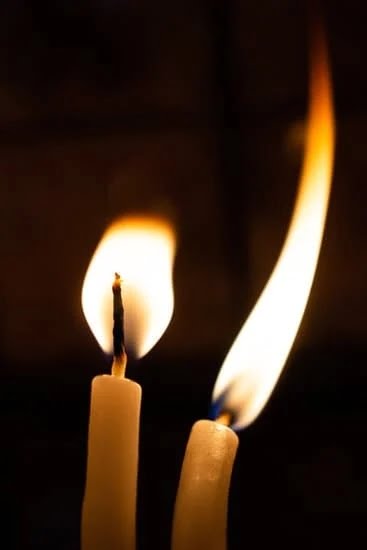Introduction
The Candle Making industry is an old-fashioned craft that has been transformed into an increasingly profitable, modern enterprise. Candles have a long history of providing both heat and light to humans who live in non-electric or limited electricity areas, as well as those who just want the ambience of a classic candle flame. Initially made with tallow (rendered animal fat) and beeswax, modern candles are most commonly made from paraffin wax, although natural waxes like soy, palm, and beeswax are also used.
The candle making industry experienced impressive growth over the five years prior to 2015 with revenue increasing from $3 billion to $3.7 billion. This is due largely to consumers defining their style preferences and to an increased desire for DIY projects such as candlemaking. Increased access to online bulk data of quality materials has also enabled candle makers everywhere to create their own unique products for profit through online stores, special events, and a variety of other sales outlets.
In the more recent years since 2015 the trend has continued with the global candle market reaching $5 billion by 2022. The increase in demand is driven by rising disposable income levels across nations like India and China which are two major markets expected to experience strong growth within this industry over the next few years. The growth of subscription boxes and ecommerce sites offering personalization options of scenting, labeling as well as custom containers are all innovative trends driving sales in this market as well. Furthermore businesses involved in eco-friendly products have turned towards candles for a viable product option for commercial consumption leading to increased production activity within this sector
Candle Making Industry Size and Scope Around the World
The Candle Making Industry is a huge market that encompasses a great variety of products. According to Statista, the global candle and diffuser sales totaled $4.2 billion in 2020, which was an increase of 1.7% compared to 2019. This growth was driven by increased consumer demand for indulgent and aromatic candles, as well as scented diffusers.
In North America specifically, candle sales reached a total of $3 billion in 2020 with the majority of sales being concentrated in the United States. This market also appears to be quite profitable as it generally commands higher prices than other types of home fragrances. Additionally, Asia-Pacific’s market saw growth in its customer base due to increased awareness and preferences for luxurious scents prompting more companies to tap into these markets. An estimated 30% of all global candle retail sales are attributed to this region.
Overall, the Candle Making Industry is booming across all regions with various specific brands emerging in each area according to local tastes and preferences. As consumers become increasingly conscious about their purchases and prioritize long-lasting value and quality over quantity, Candle Makers have been forced to produce items that are aesthetically appealing and also long-lasting, fueling the industry even further. With trends such as aromatherapy becoming increasingly popular around the world, there is no shortage of opportunities for Candles makers seeking new avenues for growth and innovation
Detailed Breakdown of Candle Making Industry Revenue Across Countries
Candle making is an ancient craft that is still popular in many different countries and economies. The industry is worth billions of dollars at both a local and global level, with each country having its own unique spin on the traditional craft.
In the United States, revenue from candle making totaled $2.7 billion in 2018, with this figure continuing to rise year after year. This revenue is driven mainly by two forces ” the first being a scientific one ” the demand for natural ingredients has grown as people seek out clean-burning options made out of beeswax, soy wax and plant-based waxes. The second force driving growth in this market is a more creative one ” more home candle makers are entering their products into businesses across the country than ever before.
In Europe, the market size of this industry was estimated to reach EUR 654 million in 2019, with Germany leading the charge as its largest candle selling market. French consumers are found to be particularly keen on aromatic candles made from fruit or flower inspired fragrances, while British shoppers prefer traditional pillar or votive style candles.
In Japan and Australia, the candle making industry generates over $1 billion each year combined. Japan’s expansive range of handmade soy candles tend to be decorated with intricate artwork and come in a variety of shapes like animals or tiny statues; sales here can often make up over half of total industry revenue within Asia-Pacific markets combined. Meanwhile, Australians have really embraced more bold statement scents such as peppermint or eucalyptus; sophisticated soy pillars have become particularly popular among their consumer groups too due to their longer burn times without producing excessive smoke or soot buildups around burning surfaces.
Employment Trends in the Candle Making Industry
The latest statistics show that employment in the candle making industry has been increasing steadily over the past decade. These increases are likely due to the rising popularity of homemade candles as a hobby and an industry. The demand for handcrafted candles is increasing, as is the interest in artisan-level services including sharing knowledge, offering workshops, and selling supplies. This surge in interest has seen employment currently at an all-time high with nearly 8,000 people working in commercial candle-making establishments in 2019.
Additionally, more people are exploring self-employment opportunities within this field by launching their own businesses and creating jobs for others. Many entrepreneurs sell their wares at craft shows or online stores to reach customers from around the world. Furthermore, with advancements in technology providing a range of tools to help make candle creation easier and more efficient than ever before, there are also plenty of possibilities for new companies to enter the market and increase competition even further. This has triggered investment from established companies and venture capitalists alike as they eye up potential profits on setting up new production lines or acquiring smaller businesses. Ultimately these developments appear to be good news for those looking for a career within this sector, particularly with job openings projected to continue rising throughout 2021.
Candles Purchasing Trend in the US & Other Countries
The candle-making industry is booming, with Americans spending more than $2.6 billion annually on candles in the US alone. Candles are no longer just a practical item for utility but are more often sought after as gifts, art objects, and decorative items. They are also becoming increasingly popular outside of the US – growing popularity in places such as the UK, Australia, India, and China have driven global sales of scented candles to an estimated 7 million dollars in 2019.
Within the US, fragranced jar candles are unsurprisingly the most popular item, accounting for over 50% of sales within the overall industry. This began a wider trend in other countries too ” UK consumers reportedly spent nearly three times more on fragranced candles than unscented varieties during their last estimate (2017). Australia has similarly seen an increase in fragrance popularity with Australian candle makers reporting a strong preference among their customers for these speciality candles compared to unscented counterparts. Meanwhile China’s booming middle class has created an unprecedented demand for scented items that cultivate living space into something serene rather than sterile ” researchers at KBC predict that Chinese households will spend upwards of 9 billion renminbi on such fragrance items alone by 2023. India too is seeing a rapid expansion in its willingness to buy scented items within its candle making sector, with officials predicting 10% growth yearly into 2021.
Global Profits and Challenges for the Candle Making Industry
The global candle making industry is projected to reach $3.28 billion by 2025, growing at a compound annual growth rate of 3.2%. This steady rate of growth indicates that candle makers are taking advantage of trends such as specialty scents and eco-friendly products, allowing them to take advantage of the increasing demand for luxury gifts and relaxation items.
However, although the global candle making industry looks positive, there are some challenges that manufacturers face in order to remain competitive in the market. Factors such as raw material costs driven by the fluctuating prices of wax and oils used for scent can cause challenges for existing manufacturers due to higher production costs. Additionally, increased competition from low-cost imports can also put pressure on margins and impede the industry’s growth prospects. Furthermore, rapid advances in product innovation are also leading to shorter product lifecycles and changes in consumer taste, resulting in increased need of speed when launching new products or variants without compromising on quality standards.
Profiles of Major Manufacturers and Producers of Candles
The candle making industry has been booming over the past several years. In the United States alone, the industry has grown to $3.06 billion in 2019 and is expected to reach $4.95 billion by 2027 with a compound annual growth rate of 6.6%. This growth can be attributed to the increasing demand for fragrant and decorative candles as well as candles made from natural, eco-friendly materials such as beeswax and soy wax.
Major manufacturers of candles include Yankee Candles (U.S.A.), Colonial Candle (U.S.A.), Viacremeau scented candles (Canada), Palaume Creations (France), Nabi (Japan), Harivalam Candle Industries Pvt Ltd (India) and Cire Trudon (France). These companies specialize in providing high quality product variety including designer scented candles; LED lamps; votives; floating;, tea lights; pillars and jar candles using a variety of materials such as paraffin wax, beeswax, soy wax, palm wax and bayberry wax, each with its own unique scent and look and feel. All manufacturers follow stringent rules when it comes to their packaging process which ensures that all their products are safe for customers at all times. Additionally major producers have invested in modern technologies that aim to reduce wastage during production while enhancing efficiency standards throughout the entire manufacturing process up until delivery of the final product to customers. Furthermore many producers are adapting cleaner energy sources such as solar power or biofuel resources to fuel their factories while developing more eco-friendly candle producing techniques that safeguard workers health while ensuring sustainable production processes at all times.
Exporting and Importing of Candles by Country and Region
The international candle making industry is growing at an impressive rate, with revenue from candle exports currently estimated to exceed $1.74 billion USD. This is a major increase from the revenue of just over $770 million recorded in 2015. The highest importers worldwide are the United States, Germany, France and the UK ” importing nearly 70% of total imports in 2015. Much of the increase in demand for candles is attributed to increasing aspirations for spa days and aromatherapy sessions, as well as their use within weddings and event planning.
When it comes to specific countries and regions responsible for importing these candles, the US has been by far the biggest spender due to rising demands from its prosperous retail industry. The EU also accounts for a substantial portion of international candle sales, with Germany representing 23%, France 14%, Italy 11%, and the UK 7%. Although North America has traditionally had higher figures than Europe when it comes to candle imports, statistics show that Europe’s import figure grew by nearly 22% in 2015 compared to only 8% for North America during this same period – indicating strong demand from European retailers.
In comparison, Asia also represents significant activity in terms of international candle trading. China alone accounts for 12% of international candle imports and Japan 5%. Furthermore, India serves as an important exporter of candles to international markets ” particularly those located within East Asia and South East Asia – accounting for 9% of total export volume last year while Indonesia reported 8%. This strong export presence follows government initiatives designed to boost local manufacturing whilst serving both domestic needs and creating networking opportunities among small-scale retailers operating around smaller townships
Innovations in Candle Design and Scent Profiles
The candle making industry is constantly evolving and becoming more popular. In recent years, candles have seen an increase in demand across all types of consumers from millennials to baby boomers. The global candle market size was valued at USD 13.2 billion in 2018 with a projected growth rate of 3.4% for 2019-2025.
Innovations in candle design, as well as scent profiles, have made the industry even more attractive to stay competitive in the current market. Unique shapes, such as geometric shapes and customized molds have allowed for an array of customizations that weren’t available before. Additionally, scented candles are now made with a variety of essential oils and fragrances which create specialized aromas not before possible. Consumers also now have access to unique double wick candles that provide greater scent throw than traditional single wick candles as well as candles utilizing natural waxes including soy and coconut wax which allow better visibility while burning. These new additions to the industry are continuing to spark consumer interest and lead to superior product performance overall.
Concluding Thoughts on the Future of the Candle Making Industry
The candle making industry has grown steadily over the years, with increasing sales each year. Consumers are embracing the convenience and diversity that candles can offer, from fragrances to decorations. While the future still remains uncertain, there is promising evidence that the growth in the candle making industry will continue in both current markets and new ones. It is clear to see that consumers are looking for new ways to relax and enjoy their homes and with a plethora of options on the market; people will always find something special in candle making.
As technology advances and consumers have more options when it comes to home fragrance products, candle makers must constantly innovate and improve upon their product offering to remain competitive. Candles now come in a variety of shapes, sizes, colors and scents as technology allows manufacturers to tap into more specialized niche markets, so vendors need to stay on top of trends if they want to maintain their customer base. Additionally, there has been a surge in demand for natural, environmentally friendly ingredients which means brands must source non-toxic wicks, dyes and waxes if they want their products to stand out from competitors. Furthermore, e-commerce has allowed brands to reach a far larger customer base than before so it’s important for online stores to make sure their presence is optimized for maximum visibility across all platforms. As long as customers continue looking for high-quality candles with unique designs, an ever-growing pool of vendors will be willing and ready to meet them head on through careful marketing strategies such as review management services or targeted advertising campaigns on social media networks like Instagram or Facebook. With increased investment in safety measures such as fire-resistant containers and greater attention paid towards green practices like reusing containers or sourcing recycled materials”one can rest assured that the candle making industry is set for a bright future ahead of it.

Welcome to my candle making blog! In this blog, I will be sharing my tips and tricks for making candles. I will also be sharing some of my favorite recipes.





